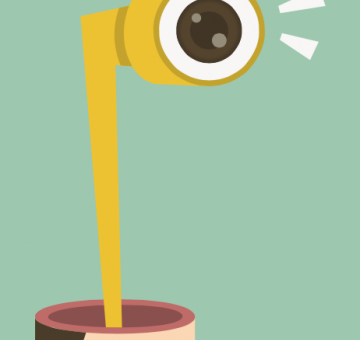Intellectual Property (IP) 101

What is Intellectual Property?
Entrepreneurs, innovators, and researchers own several assets that are not necessary physical assets. Intellectual Property (IP) are intangible assets that one owns, they are the creation of mind from disruptive inventions to artistic work and brand names. In order to protect those assets, we use intellectual property rights or IPR.
Who is considered an innovator?
Innovators are those who create something new with a purpose. Innovators are called inventors when they create something original that didn’t exist before. They perform the actual experiment that transfers theory into reality. They are not necessarily researchers, they can be entrepreneurs, students or anyone with a novel idea that has a real life application.
Why should innovators protect their ideas?
It is crucial for innovators to protect their ideas in order to benefit from their original and creative ideas. If you are an entrepreneur, protecting your IP will definitely act in favor of your business. IP rights will provide you protection against your competitor whether from copying your idea or entering your market. Moreover, startups that own registered IPs tend to attract more investors and gain consumers’ trust towards their products.
If you are a researcher, IPRs will help you move from the lab to the market. After registering your IP, you will be able to license this IP to a company that can manufacture or commercialize your invention/technology. Those companies know how to turn intangible IPRs into tangible products and service. Hence, you’ll be able to benefit from the licensing fees and generate revenues.
How do innovators protect their ideas and inventions?
There are several types of IPRs that can be used to protect your ideas. In this tool, we picked the most used and common IPRs in business and research.
1.Patents
Using patents you can protect inventions, whether it is a product or a method for producing certain products. Patents grants protection up to 20 years and cover how things function, what they do and how are they made. If you have an idea that you want to protect but don’t mind that others will be able to use your disclosed invention after 20 years, then consider getting a patent.
2.Copyrights
Copyrights are used for protecting original or derivative works such as translations and adaptations. It is most commonly used in protecting music, video or written material and software codes. A copyright doesn’t need registration and is automatically granted upon publishing your work. However, in some countries like Egypt, you can register your work in order to have an official document containing the date and content of your work to easily prove your ownership.
3.Trademarks
Trademarks are not used for inventions or ideas but rather used to identify businesses. It includes everything related or attached to your brands such as names, logos, shapes or slogans. Anything your customers or users can relate to your company is considered a trademark.
4.Design rights
Design rights protect the outer appearance of a product. They don’t protect the product itself. Designs cannot be protected by design rights if they have technical function. For example, the outer body of the racing car has a technical function, which is to reduce air resistance. So it cannot be protected by design rights.
5.Trade secrets
The most famous trade secrets nowadays areCocaCola and KFC’s formulas. This tool defined the confidential business information that a company does not intend to disclose.
In order to protect a trade secret, the company must have policies and procedures in place to ensure the confidentiality of information.






































































EgyptInnovate site is not responsible for the content of the comments